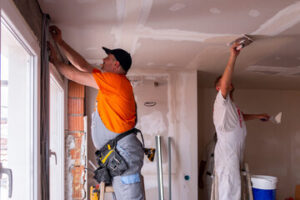American Plastic Molds are a key component of many manufacturing processes. They are susceptible to a number of different types of damage. These include wear loss failure, local plastic deformation failure and fracture failure.

Family molds are best suited for applications that require similar shapes and features. This method is ideal for reducing the cost of production while increasing the number of parts that can be made at one time.
Injection moulding is one of the most common methods for manufacturing plastic parts. It is used to produce replacements for metal components or to make new products from scratch. The process involves a hollow metal block into which liquid thermoplastic is injected to form the desired shape. It then cools down, resulting in a solid, strong and durable end product. The advantages of this method include great precision and repeatability as well as speed and a low cost per unit. It is also possible to incorporate a wide range of features into the plastic, such as bosses for threaded inserts or fasteners, ribbed supports for extra strength, living hinges that allow some flexibility and snap-fit joints for joining sections together. It is also easy to control the colour of a plastic part, as masterbatches, pre-colored resins and salt and pepper blends can be added to the molten plastic before injection.
The injection process takes place in an injection moulding machine, which consists of the clamping unit, the injection unit and the mold. The clamping unit is used to hold the mold halves closed during the injection and dwelling steps, while a hydraulic cylinder is responsible for opening and closing the mold plates between molding cycles. The injection unit, which is a screw-like plunger, injects melted plastic into the mold cavities. This process is controlled by the machine, which controls the injection speed and injection pressure of the screw. It also controls the dwell pressure after the molten plastic fills all of the cavities.
After the plastic has cooled down, the ejection system is used to remove it from the mold. This includes the sprue and runners, which are the passageways through which the molten plastic flows from the injection unit to the cavities. The gates, which are located at the ends of the runner systems, direct the flow of molten plastic into each cavity. Air vents are also included in the mold tool to release trapped gases.
After the plastic has been injected and molded, it is bonded together with other parts, such as metal inserts, to create a final product. Injection moulding has a high production rate and is an environmentally friendly process with minimal waste, as any unused plastic is recycled.
Extrusion Moulding
The plastic extrusion moulding process involves forcing molten plastic through a die to create a continuous profile of the desired shape. This method works well for producing long, tubular products like pipes and tubing. It is also useful for producing thin plastic films, coatings, wire insulation, and monofilaments. In addition, this type of moulding is ideal for making food packaging and beverage straws. It can even be used to make components for automobiles, such as weatherstripping and fuel lines.
The process begins with the feeding of raw plastic granules into an extruder’s hopper. These granules are heated by frictional heat and the pressure of the screw inside the barrel to form a molten liquid. Once the melted granules reach the barrel’s feed section, they are forced through a die and into the desired shape. The resulting extruded plastic can then be cooled and cut to size to create the finished product.
Compared to injection molding, this manufacturing method produces longer, thinner profiles and has better resistance to abrasions and corrosion. It is also a good choice for producing high volumes of the same product or component, as it allows for greater production efficiency. However, it can’t produce shapes that are as complex or as tight as those produced by injection molding. Additionally, the melted plastic can often swell when it exits the die, so initial calculations should account for this expansion.
The wide array of materials suitable for extrusion moulding means that this process is very versatile and can be used in many different industries. It’s particularly popular for producing products like pipes, tubes, and plastic film, but it can also be used to manufacture building materials, wires and cables, and other similar products. The best plastics for this type of moulding include low-density polyethylene (LDPE), high-density polyethylene (HDPE), vinyl, polypropylene, and butyrate. These plastics are known for their durability, resistance to chemicals, and strength-to-weight ratio. They also feature excellent flame retardant properties. Extrusion moulding is an environmentally responsible manufacturing process and most of the melted plastic can be recycled. This helps reduce the number of plastics in the environment and reduces waste.
Casting Moulding
Casting and molding are both sophisticated techniques used to create prototype models that will later be employed in the manufacture of a finished product. Both processes have their pros and cons. It is important for manufacturers to understand the differences between the two, as it will help them determine which process is best suited to their needs.
Typically, casting is used to produce metal molds for manufacturing products and parts. The main benefits of this method include precision, dimensional accuracy, and the ability to make products with intricate designs. It is also capable of producing parts that are extremely durable and resistant to heat and corrosion. It is also relatively quick and inexpensive to produce, especially compared to other methods such as injection molding.
In addition, the use of casting allows for a greater variety of materials than other types of production methods. It can be used for a range of applications, from consumer items to industrial equipment. Some of the most common materials include aluminum, stainless steel, and zinc. Casting can produce parts that are difficult or impossible to make using other methods, such as intricate shapes and undercuts. It is also useful for creating metal parts with complex features, including internal channels and deep grooves.
Another benefit of this type of manufacturing is that it can be done on a large scale. This is possible due to the use of reusable molds, which can be used for a variety of applications. The process can also be completed quickly, allowing for rapid prototyping. This can be particularly beneficial for new products that require the validation of their intended material before bringing them to market.
During the casting process, a molten material is poured into a pre-formed mold. The melted material is then allowed to solidify. This is usually achieved with the aid of a cooling mechanism that uses water channels to reduce the temperature rapidly. This allows for a higher yield and reduces the risk of air entrapment and porosity. The finished product can then be removed from the mold, either by an operator who will carefully check that it has been properly filled, or by a metered system that removes it automatically through a gate.
Gravure Moulding
Gravure printing is a printmaking technique where ink is deposited onto a surface using an engraved metal plate. It is a very flexible process and is well suited for high-definition printing on a variety of substrates. It is particularly effective in printing on aqueous materials such as paper. It is also commonly used for specialty work, such as decorative laminates. Unlike offset printing, which can be expensive for large production runs, gravure offers a cost-effective solution.
For some applications, it can even be cheaper than sheet-fed lithography. This is especially true for small and medium-run jobs. It is also ideal for high-density printing, which can be difficult to do with other print processes.
This type of printing is also more flexible and durable than offset printing, making it a better choice for high-resolution graphics. It is also more environmentally friendly and requires less energy than other printing techniques. Another benefit of gravure is that it can use a wider variety of inks, which increases the flexibility of the product and makes it more attractive to consumers.
It is a popular method for packaging printing, as it produces high-quality, durable prints and can be done on an inline basis. This makes it ideal for quality driven flexible packaging such as gift wrap and security items. It can also be used for label printing on a variety of substrates, including plastics and glass.
Several different types of gravure are available, with each type having specific applications. One example is agravure, which is used for fine art printing and specialty products such as greeting cards and gift wrap. Another is gravure for security documents, which uses a special ink to make the prints water-resistant and more secure.
While the popularity of this form of printing has decreased over time, it is still widely used. The most important factor in determining the best type of gravure for your project is understanding the core function of the part you are manufacturing. For instance, if your product is designed for ergonomics, it will need to have good gripping properties. Overmolding can provide this, as well as vibration dampening and sound absorption. Injection overmolding can also create water-resistant seals for electronics and other devices.


